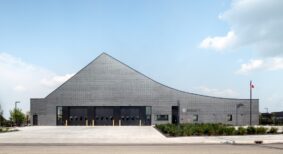What is lease financing and when should it be considered?
Lease financing is an alternative form of borrowing that is often used by a business to acquire capital assets, including office furniture and related purchases. Leasing typically offers fixed rate financing over a defined term, usually from three to five years, but can vary based on the type of asset being leased.
The primary differences between a lease and loan arrangement relate to asset ownership and tax treatment. Leased assets remain the property of the leasing company until the end of the term, at which point the assets are typically purchased or returned by the client, depending upon the lease terms. Under a loan arrangement, assets are purchased at inception and the associated debt obligation is retired over time. Leases can, in certain instances, be treated as a monthly expense, which not only provides a favourable tax treatment but also avoids impacting a company’s capital budget. Leasing will often offer more flexible terms and repayment structures than traditional loan financing.
Lease financing should be considered a viable alternative to using cash or other forms of borrowing as a component of a company’s overall capital acquisition strategy every fiscal year. Most companies will not have sufficient cash on hand to finance their entire capital expenditure plan, so they ultimately look to borrowing to finance some of their capital acquisitions. Capital assets generally depreciate, so leasing is often an effective financing method to acquire these assets. Leasing frees up working capital and bank lines, making them available to invest in revenue generating assets and other investment opportunities that can provide a return on capital.
Several manufacturers and independent leasing companies provide lease financing tailored to a wide range of assets, including furniture, wall systems, fixtures, office equipment and technology, and HVAC equipment, among others. In many cases, project costs can be incorporated into a lease and spread out over the term, including consulting and design services and installation costs. These types of leasing arrangements can prove invaluable in managing project costs within a tight budget.
Given today’s low interest rate environment, there has never been a better time to explore lease financing as a viable means of making capital expenditure dollars go further. The leasing industry rule of thumb is that a company can acquire four times more capital assets through leasing than if it were to purchase outright.
Chris Rayner is vice-president of sales at Office Source Inc. in Mississauga, Ont.



